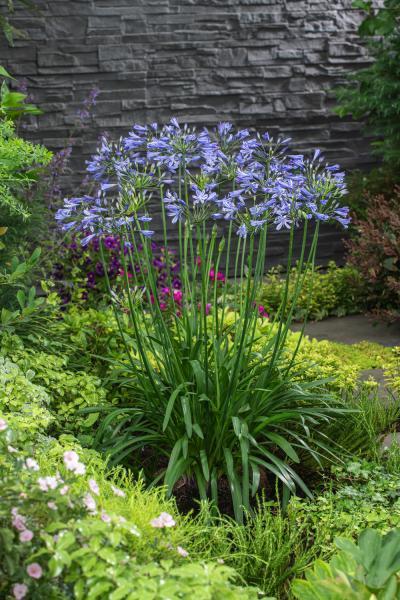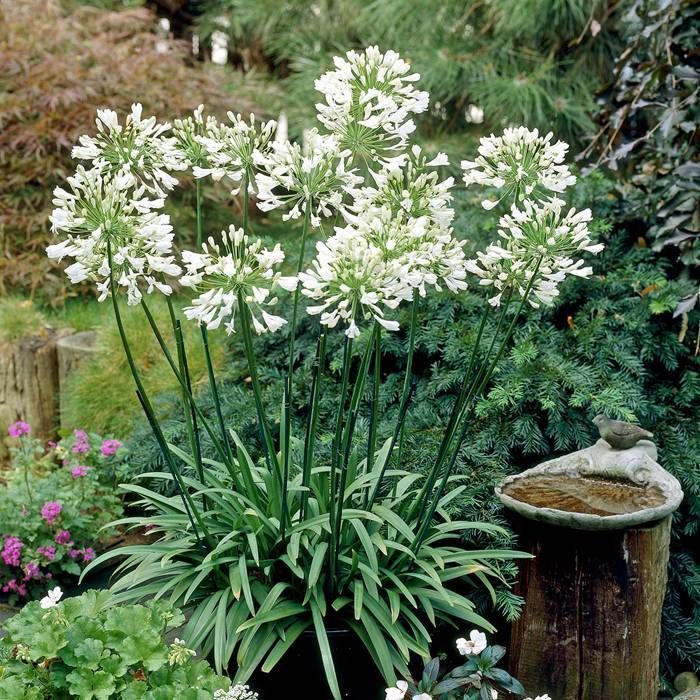Sensational Agapanthus: Enhancing Your Garden's Appeal
Sensational Agapanthus: Enhancing Your Garden's Appeal
Blog Article
Understanding the Art of Agapanthus Treatment: Crucial Actions for Healthy Growth and Vivid Blooms
In the realm of cultivation, the growing of agapanthus stands as a fulfilling venture for those that seek to support these sophisticated blooming plants. From selecting the appropriate variety to grasping trimming techniques, the trip in the direction of cultivating thriving agapanthus plants is diverse and holds the essential to unlocking the complete possibility of these botanical gems.

Picking the Right Agapanthus Range

When selecting the ideal Agapanthus range for your yard, consider factors such as climate viability, blossom shade, and development behavior. Agapanthus, commonly called Lily of the Nile or African lily, comes in a selection of colors varying from shades of blue and purple to white. Select a bloom shade that enhances your existing yard scheme to produce a harmonious landscape. Furthermore, consider the climate in your area to guarantee the Agapanthus range you select can grow in your details problems. Some varieties are a lot more forgiving of cool temperature levels, while others prefer warmer environments. Recognizing the development practice of different Agapanthus selections is vital for appropriate placement within your garden. Some selections have a clumping growth practice, perfect for boundaries or containers, while others have a more dispersing nature, ideal for ground cover or mass growings. By thoroughly evaluating these variables, you can pick the perfect Agapanthus selection to boost the charm of your yard.
Perfect Planting Conditions
Taking into consideration the ideal environmental needs is crucial for effective Agapanthus growing. Agapanthus grows in well-draining soil with a somewhat acidic to neutral pH degree. When planting, select an area that gets complete sunshine to partial shade. In hotter environments, providing some mid-day color can prevent scorching of the leaves. Agapanthus plants are sensitive to chilly temperature levels and should be secured from frost throughout winter months.
To guarantee healthy and balanced development and vivid blooms, plant Agapanthus light bulbs at a deepness of about 2-4 inches and space them 8-12 inches apart. Including raw material, such as compost, to the soil can improve drain and fertility, advertising durable origin development. Mulching around the base of the plants helps keep wetness and reduces weed growth. Routine watering is vital, specifically throughout the growing period, to keep the dirt regularly moist yet not waterlogged.
Watering and Feeding Tips
Keeping appropriate moisture degrees and offering essential nutrients are vital aspects in the care routine for Agapanthus plants. When it comes to watering Agapanthus, it is critical to strike a balance. These plants prefer continually damp dirt however are susceptible to root rot if overwatered.
Feeding Agapanthus is important for advertising healthy development and prolific flowers. Apply a well balanced plant food, such as a 10-10-10 formula, in the very early spring as brand-new development arises. Repeat this application every 6-8 weeks throughout the growing period. Avoid image source extreme fertilization, as it can cause lush foliage at the expenditure of blooms. Constantly comply with the producer's guidelines for proper dilution and application techniques. By following these watering and feeding tips, you can ensure your Agapanthus plants grow and produce lively, long-lasting flowers.
Pruning Methods for Agapanthus
Trimming Agapanthus plants at the proper times and with correct strategies is crucial for maintaining their health and promoting optimal growth and flowering. The suitable time to trim Agapanthus is in late wintertime or very early spring before new growth emerges.
For moved here flowered stems, wait until the blooms have perished and after that cut them back to the base. This not just tidies up the plant's appearance but likewise urges the growth of brand-new blossom buds. Deadheading invested flowers can likewise redirect the plant's power into producing more blossoms as opposed to setting seeds. Nevertheless, if you want to collect seeds for breeding, leave some blossoms to completely dry and fully grown on the plant.
Bear in mind to utilize tidy, sharp devices to make specific cuts and lower the danger of introducing conditions. Agapanthus. Normal pruning will aid keep your Agapanthus looking healthy and neat while making certain an abundant display of gorgeous blossoms
Taking Care Of Common Parasites and Illness
After making sure correct pruning methods for Agapanthus, it is essential to attend to usual insects and conditions that can influence the health and vigor of these plants. One usual bug that affects Agapanthus is the Agapanthus gall midge.
Additionally, Agapanthus plants can experience from root rot if they are planted in badly draining dirt. By being attentive and taking prompt activity against illness and insects, you can aid your Agapanthus plants thrive and generate lively blooms. Agapanthus.

Conclusion
In verdict, grasping the art of agapanthus treatment entails selecting the appropriate range, giving suitable planting problems, appropriate watering and feeding, proper trimming techniques, and attending to usual pests and conditions. By following these crucial actions, you can guarantee healthy and balanced growth and vibrant flowers for your agapanthus plants. Bear in mind to on a regular basis check and preserve your plants to advertise their total wellness and durability.
To make sure healthy and balanced development and vibrant blossoms, plant Agapanthus light bulbs at a depth of about 2-4 inches and room wikipedia reference them 8-12 inches apart. By complying with these watering and feeding ideas, you can ensure your Agapanthus plants prosper and create vibrant, lasting blossoms.
One usual parasite that affects Agapanthus is the Agapanthus gall midget. Additionally, Agapanthus plants can suffer from origin rot if they are grown in poorly draining pipes dirt. By adhering to these crucial actions, you can make certain healthy and balanced development and vivid flowers for your agapanthus plants.
Report this page